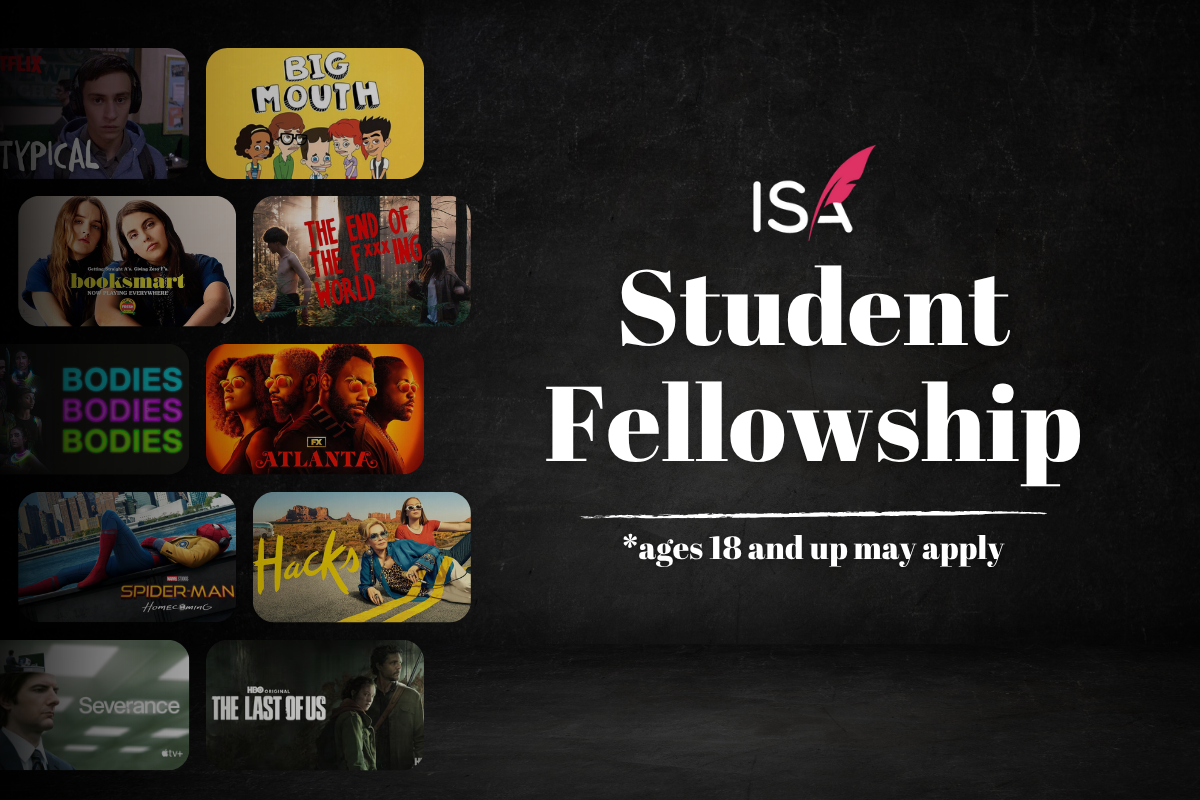A Year in the Life of a Professional Screenwriter
Screenwriter Bob Saenz takes you into the year in the life of a professional screenwriter – it’s not what you think.
In a conversation with the friend, the mistaken idea that professional screenwriters are consistently busy working on paid assignments or have regular sales came up. By mistaken, I mean… mistaken. Most pro screenwriters go through extended times where they don’t have any paid work, unless they’re in a writer’s room, and then that’s only a few months a year, because of the new small seasons involved of 6 to 10 episodes only. Sometimes for months, sometimes up to a couple of years… or more.
I’ve had years where I had no sales, maybe one write-for-hire or rewrite job the entire year. Or none. It makes for frustrating times where you write spec scripts, you market yourself hard, you call your reps probably too often, and generally drive your spouse or partner a little crazy. It also teaches you the lesson of being a good steward of your money and saving for times like that.
I keep a Bio of all my paid writing jobs and specs written for each year, so I have a record….
Here are my entries for 2018.
2018: Original Script, “The Business Trip.” A Horror Film
That's my entire 2018 list. Yep. No jobs. I only wrote one spec and it was a scary year…. Not just professionally. I also got diagnosed with cancer that year, too, and went through surgery and chemo. But nobody outside my family and some close friends knew, so it didn’t affect me getting any work. I just didn’t get any. By the way, I’m clear of cancer as of a month ago.
This is an industry of extreme patience on the writer’s part. Everything moves incredibly slowly.
I mean S L O W. It takes years for a film to get made, if you’re lucky enough to have that happen. My film Extracurricular Activities took 18 years from the time I wrote it to the time it got produced. On a lighter note, The Right Girl only took five years. The average is eight.
I have three other scripts and one series pilot sold that haven’t been made yet. One of them sold at least 5+ years ago, the others since but as you can see from my 2018 list, it’s been a while on all of them. That’s normal.
Let’s go through my year 2019, because I already gave you the highlights of 2018. A lot of lows followed by some more lows. These help when you’re writing a horror film, by the way. Did for me. More importantly, I didn’t give up. I didn’t lose faith. I knew there would be years like this. I’ve had them before and didn’t give up and good things happened.
Let’s look at 2019.
One of the things I’ve done to help keep busy and keep my brand out there was to begin speaking and teaching at Writer’s Conferences across the country. I did three of them in 2019, and they were amazing, fun, I learned a ton, got to do some serious networking, and made some friends I’ll be keeping. I got to travel, and I’m already scheduled for four conferences this year. And I’m hoping for more. I’d also love to panel at film festivals if I can.
Work in 2019?
I was hired right off the bat, by reference, to rewrite a script for an independent Christmas film. It was a labor of love because not only did I like the basic story, I loved the message of this film. The producers were nice enough to trust me completely as I took the script completely apart and reconstructed it with some new characters, new motivations for the old ones, new personalities, some old characters gone, some subplots gone, and a brand new ending. The film is in post-production now. It was a month-long job with some minor rewrites after, with their notes. A pleasure.
Then, there was a lull. A few months of work lull. I should have written another spec. I didn’t. I did travel to Hawaii for my anniversary and get some work on my house done. And…
I attended the red carpet premiere in LA of Extracurricular Activities. I had never walked a red carpet and had my picture taken or been interviewed before. Did the Q & A afterward, too. It was a dream. I floated through it. I floated through the great reviews, too. Some were the kind you dream about. Yes, there were some bad ones. One of them hangs in my office. “What kind of person writes a film like this?” It’s my favorite one. If you’re intrigued by this review and haven’t seen it, it’s on Amazon Prime now.
I also hosted two other industry screenings of the film in San Jose, CA and in Nashville. Both in big theaters. Both full. Did a Q & A after at both. It was one for the books.
It was an experience I would hope every writer can have. That you can have. But it was also only a few days total of the year. The lull wasn’t going away…
Then my manager called and thanks to his relationship with a producer, I got a chance to do a write-for-hire on a script. The producers had a ten-page synopsis that I turned into a 105-page script. Again, GREAT producers who let me do what I wanted with their story and notes. I did one more rewrite and a polish before it went to the network. I’m hoping it goes before cameras this year. A month-and-a-half worth of work.
Then a lull again. I went to one of the conferences. There I watched as the instructors and speakers all signed and sold their books. I came home and complained I didn’t have one. My wife, who puts up with me, thank You God, said, “Then write one. You certainly have the time.”
I took a few months and concentrated on writing a screenwriting book. That’s Not the Way It Works was published in December to wonderful reviews and sales that surprised me, well beyond what I had hoped for.
About three-quarters of the way through writing the book, I got an email from a production company about one of those sold scripts that I hadn’t heard about in years. They wanted a rewrite with a distributor in mind. I got some fabulous notes from the development execs and went to work on it.
Hearing out of the blue about a project you hadn’t thought about in years? Not as unusual as you’d think it would be. I did have to read it again a couple of times to remember what it was. I saw a LOT of ways to improve it even without their notes. Absence doesn’t make the heart grow fonder, but it does reveal a lot that can be improved. I did laugh in parts I had forgotten and thought on occasion, “Did I write that?” There were scenes I loved and scenes where I cringed.
I do revisit my specs all the time to update the tech and to polish them, something you should do at least once a year, by the way, with all your unsold specs, but I don’t revisit the sold ones.
A few weeks later, I sent the finished rewrite in and completed the book.
A solid work year.
2018. One spec script and cancer.
2019. A premiere. Screenings. Writers’ Conferences. Three paid writing jobs. Wrote and published a book. And no cancer.
2020. A mystery. I have no idea what’s ahead. The book is selling. That’s good. I have some leads for paid work, but it’s early in the year. Some might pay off, but maybe not. I have some interest in a couple of my specs, but we all know how much time that takes. In February, I have the San Francisco Writers’ Conference to attend and work. This time I’ll have a book to sell there, too.
Do I fear an extended lull? Sure. If it happens, I have two specs I can write, and will. And I’ll spend the year, like every other professional writer, hoping for the best. Keeping the faith. I won’t stop networking and marketing myself.
So, what do YOU do during a lull? You look for conferences in your area to attend and network. You look for screenwriting groups to be involved with, maybe meeting people who can become part of your writer’s circle, trading scripts for notes. You go to film festivals in your area and network. You fill your whiteboard with script ideas, never stopping. You send your query letters by the dozens. If you have a rep, you don’t wait for them to do it. You work with your reps, if you have them, on solutions to the lull. You write and write and write. A good writer can write two to three good specs a year. Yes, you can write more, but good ones are more work than just churning something out. Quality beats quantity every time.
And never forget that the industry has their lulls, too. The months of… July… vacations. It’s a real thing. December through January (until Sundance is over) is a desert in L.A. Not a good time to send queries or try to pitch. During those times you perfect your pitches or your query letter getting them ready for when the industry opens again. This includes most independent producers, too.
Yes, I’ve watched as some of my pro writer friends struggle some years while others have career years, having spectacular success. And then the next year it changes up. Name of the game. You endure and work through the hard times so you can revel in the good ones. This happens to every writer.
Want to learn more about screenwriting from the comfort of your home? Check out the upcoming courses at Screenwriters University!
Bob Saenz is a screenwriter, author, and actor. His written and produced screen works include Hallmark’s “Help for the Holidays,” “Rescuing Madison,” “Sweet Surrender,” “On the 12th Day of Christmas,” “Sound of Christmas,” “The Right Girl,” “Christmas in Love,” the theatrical “Church People,” and the dark-comedy thriller “Extracurricular Activities.” He does rewrites and polishes on film and TV projects for producers and production companies. He's the author of the screenwriting book, That's Not the Way It Works: A no-nonsense look at the craft and business of screenwriting. His acting roles include a six-year recurring character run on the TV show “Nash Bridges,” Hallmark’s “Valley of Light,” Francis Ford Coppola’s “Jack,” David Fincher’s “Zodiac,” Finn Taylor’s “Unleashed,” “Church People,” and “The Village Barbershop,” among dozens of others. He was a radio DJ on KYCY in San Francisco, played the last 10 years in the ’60s rock band The BSides, and has done voice work on video games, documentaries, and commercials. Twitter: @BobSnz







